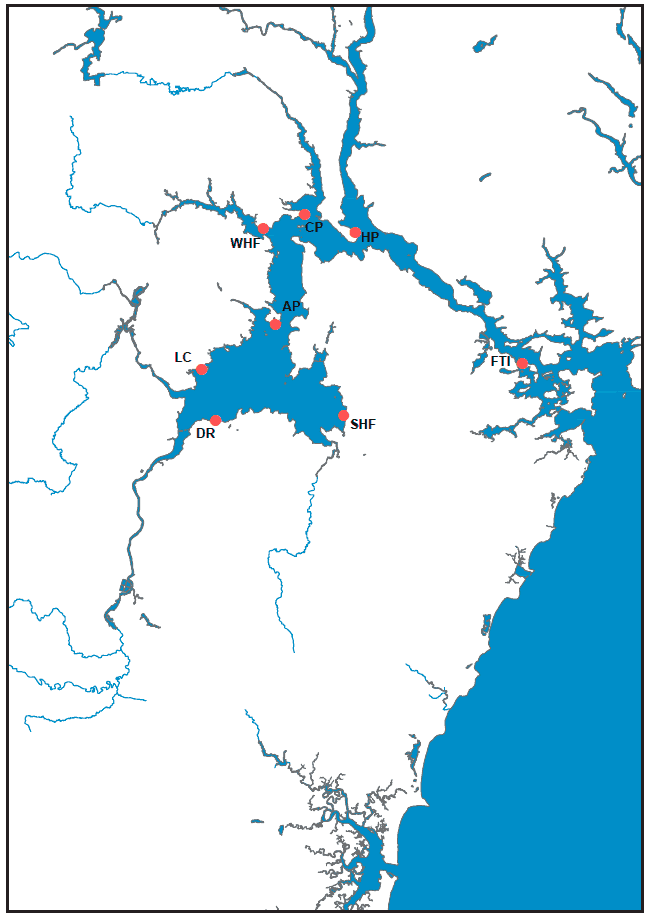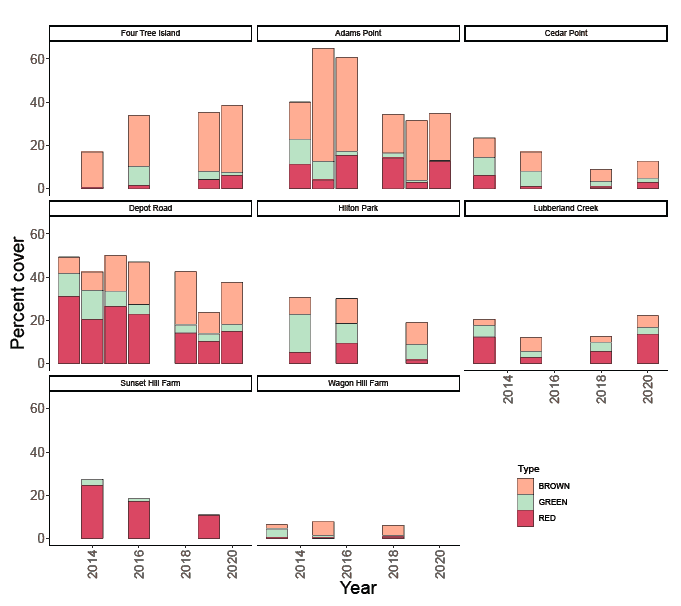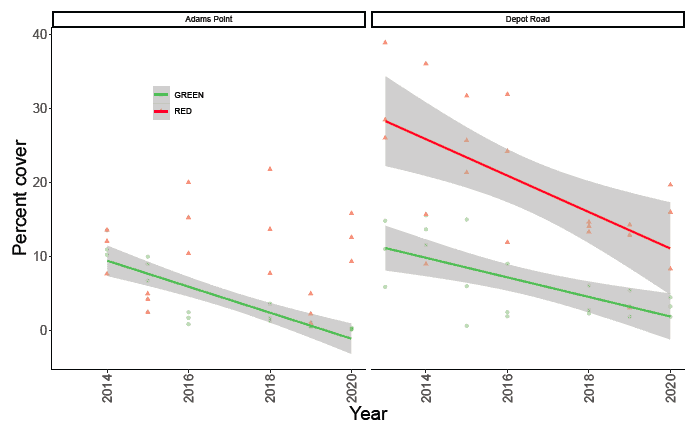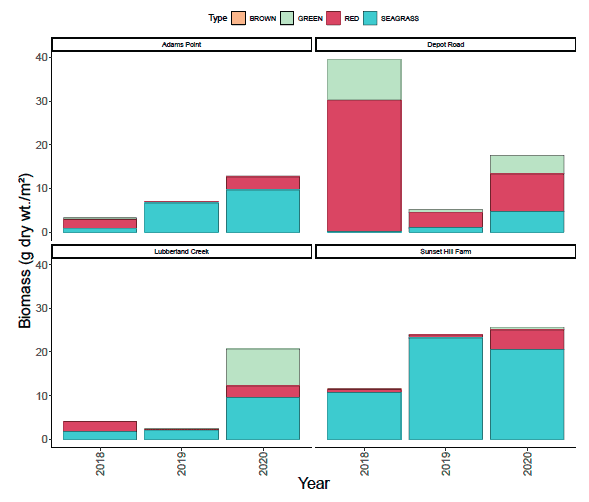Seaweed
Seaweeds
What are the dominant seaweeds that grow in the Great Bay Estuary? Are some seaweeds better for the ecosystem than others? How is seaweed abundance for different species changing over time?
Since 2013, green seaweeds at a majority of the intertidal monitoring sites in the Great Bay Estuary decreased, while there were no clear patterns for red seaweeds. A new subtidal monitoring effort, started in 2018, indicates that while red and green nuisance species still compete with eelgrass, especially in the southern and western portions of the Great Bay, the proportion of eelgrass is increasing.
Intertidal
In a healthy estuary, seaweeds are in balance with other estuarine life and are not a cause for concern. For example, attached brown seaweeds, like the image at the bottom, form important habitat and support overall productivity in the Great Bay Estuary. However, international shipping has allowed seaweeds to hitchhike from distant coasts to our estuaries and proliferate. In the Great Bay, south of Adams Point, we are seeing high abundances of these seaweeds competing with eelgrass.
Overall, data from eight stations in the Great Bay Estuary (Figure 10.1) suggest that red and green seaweeds expanded between 1980 and 2013 and since then, have decreased. The average cover of red and green seaweeds combined was generally less than 20% at Little Bay and Piscataqua River sites (Figure 10.2), and about twice as abundant in the Great Bay (Figure 10.2).
Nuisance red Gracilaria and green Ulva species composed nearly all the cover in intertidal areas. Both species can survive as drift or attached seaweed. Over the seven-year study period, only Depot Road and Adams Point had more than four years of data available for statistical analysis. Both red and green seaweeds declined significantly at the Depot Road site along the southern shore of Great Bay, but only greens were found to decline at Adams Point on the north shore of the Bay (Figure 10.3).
Subtidal
The intertidal transects established earlier in the Great Bay Estuary were extended in 2018 into the subtidal regions to examine seaweed beds and directly assess eelgrass-seaweed competition (Figure 10.4). The attached browns that dominated some intertidal areas were mostly absent from subtidal sites. Despite high variability in the abundance of drift seaweeds from year-to-year, some trends are evident. The highest seaweed abundance (dominated by Gracilaria and Ulva) and lowest eelgrass abundance was at the Depot Road location, whereas eelgrass was most dominant at the Sunset Hill Farm site (lower East Great Bay) for all three years of sampling (Figure 10.4). Eelgrass cover was stable or increased at three of four sites.
Acknowledgments and Credits
David Burdick (UNH), with contributions from Gregg Moore (UNH), Art Mathieson (UNH), Andrew Payne (UNH), Chris Peter (GBNERR/NHFG), Lara Martin (UNH), Natalie White (UNH), Elizabeth Cianciola (UNH), Grant McKown (UNH), and a host of UNH students. We appreciate the assistance of volunteers organized by the Coastal Research Volunteers.

Figure 10.1: Seaweed monitoring sites in the Great Bay Estuary, which include intertidal and subtidal locations: Adams Point (AP), Sunset Hill Farm (SHF), Depot Road (DR), Lubberland Creek (LC). Sites in Little Bay and Portsmouth Harbor are intertidal only: Wagon Hill (WHF), Cedar Point (CP), Hilton Point (HP), and Four Tree Island (FTI).
Data source: Jackson Estuarine Laboratory, UNH

Figure 10.2: Abundance of intertidal green, red, and brown seaweeds assessed by percentage cover and averaged for three transects at depths of 0.5 to 2.5 m relative to mean low water in the Little Bay and Piscataqua River sites (Four Tree Island, Hilton Park, Cedar Point, Wagon Hill Farm) and Great Bay sites (Adams Point, Lubberland Creek, Depot Road, Sunset Hill Farm). Data source: Jackson Estuarine Laboratory, UNH

